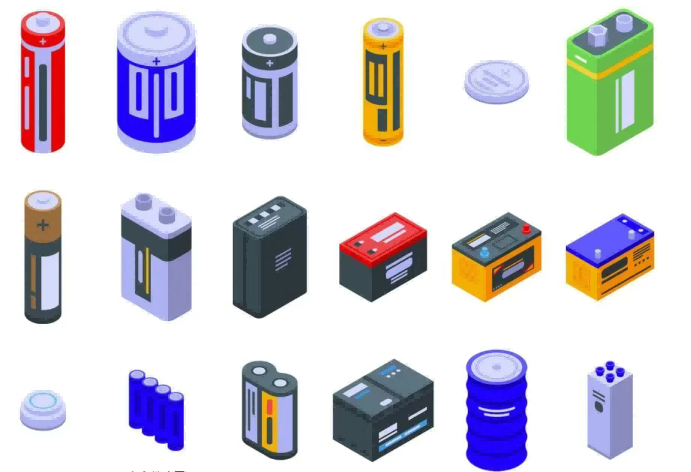Polymer Battery vs Lithium-ion Battery: Key Differences, Pros and Future Trends

The term "lithium battery" is often used interchangeably in everyday conversation, but it actually describes a broad category. Generally, this category includes primary (non-rechargeable) lithium cells and secondary (rechargeable) lithium-ion (Li-ion) batteries.
When people discuss rechargeable power, they are usually referring to Li-ion technology. However, even Li-ion batteries can be divided into two main architectures based on their electrolyte:
- Conventional Liquid Lithium-Ion (Li-ion): The most common type, typically housed in a rigid, cylindrical casing.
- Lithium Polymer (Li-Po): Also known as polymer batteries, these use a gel or solid polymer electrolyte and are typically housed in flexible pouch cells.
For the purpose of this comparison, we will use "Conventional Li-ion" to denote the liquid-electrolyte variant and "Li-Po" to denote the polymer variant. The fundamental differences lie in eight key areas:
1. Materials and Electrolyte
This difference in core materials dictates nearly all other performance characteristics. A Li-Po battery uses polymer materials in at least one critical component (cathode, anode, or electrolyte). Most notably, they employ a solid or gel polymer electrolyte instead of the liquid organic solvent found in a Conventional Li-ion battery.
2. Design Flexibility and Form Factor
The use of a gel or solid electrolyte in Li-Po batteries removes the need for a rigid metal casing. This allows them to be manufactured in incredibly thin, lightweight, and customizable shapes (pouch cells), making them ideal for modern consumer electronics and wearables. Conventional Li-ion batteries require a heavy, sealed metal shell to contain the fluid, limiting design flexibility.
3. Safety Profile
The Li-Po architecture offers a significantly enhanced safety profile. Because the electrolyte is less volatile (gel or solid), Li-Po batteries rarely suffer explosive thermal runaway when exposed to high heat. Instead, they are more likely to swell or vent gas. While short circuits can still cause overheating in both types, the rigid casing of Conventional Li-ion cells can make pressure buildup potentially more dangerous.
4. Nominal Voltage
Li-Po batteries offer the ability to achieve higher single-cell voltages by stacking multiple layered cells within a single pouch. While standard Conventional Li-ion cells typically operate at 3.6V or 3.7V, higher voltages generally require connecting multiple separate cells in series, adding bulk to the overall pack design.
5. Ionic Conductivity
The solid or highly viscous gel electrolyte in Li-Po batteries inherently has lower ionic conductivity compared to the high-purity liquid electrolyte used in Conventional Li-ion batteries. This can slightly impact performance, especially at high discharge rates. Liquid electrolytes in Li-ion cells maintain a consistently high rate of ion flow, resulting in more stable performance over time.
6. Energy Capacity
Despite the advanced materials, Li-Po batteries do not offer a clear advantage in energy density over their liquid counterparts. In fact, they often have a slightly lower total capacity rating when compared to conventional Li-ion cells of the same volume, though this gap is constantly closing with improved polymer chemistry.
7. Manufacturing Suitability
Li-Po batteries are easier and more cost-effective to produce in thin, small formats. Conversely, Conventional Li-ion batteries (especially cylindrical cells) are easier to manufacture at the thick, large scales required for high-volume production. This makes Li-ion the dominant choice for large-scale applications like electric vehicles (EVs) and grid energy storage.
8. Production Cost and Market Share
Currently, Li-Po batteries command a higher unit cost due to more complex manufacturing processes and specialized materials. Price remains the biggest hurdle for widespread adoption, with the market ratio heavily skewed in favor of the more cost-effective Conventional Li-ion cells.
Which Technology Holds the Future?
There is no simple winner, only the right tool for the right job.
- Li-Po batteries are the preferred technology for small, light, and shape-constrained devices like mobile phones, smartwatches, drones, and wearables, due to their flexibility and enhanced safety.
- Conventional Li-ion batteries remain the leader in large systems, including EVs, large-scale energy storage, and industrial tools, primarily because of their superior cost efficiency and stable high-rate performance.
However, if lithium polymer technology can achieve cost parity and improve its ionic conductivity to match liquid cells, its inherent safety, design flexibility, and cleaner potential make it a strong candidate for the next evolutionary step in high-performance battery storage.

